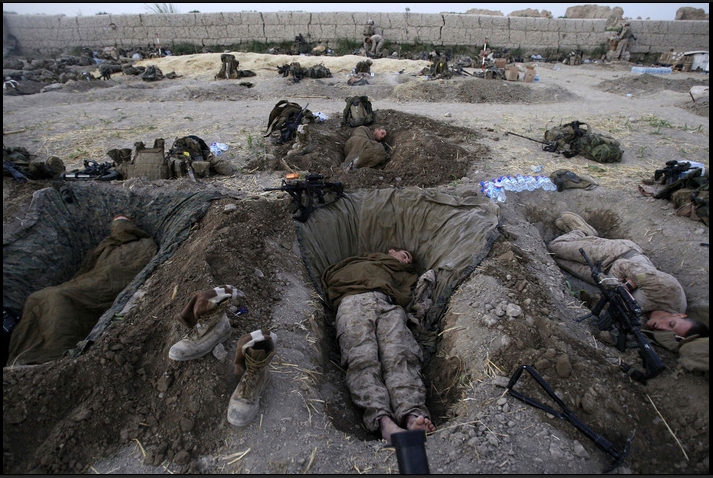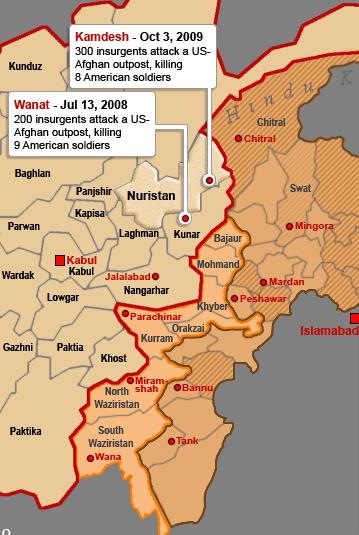Dangerous Precedents in Afghanistan
BY Herschel SmithFrom Stars and Stripes:
SHAH JOY DISTRICT, Afghanistan — An Afghan army commander whom American troops had dubbed “Snoop” was angry, accusing a U.S. dog handler of allowing his Labrador retriever to sniff a copy of the Quran while searching a cluster of villages that U.S. forces suspect is a Taliban stronghold.
The commander — named for his resemblance to the rapper Snoop Dog — warned 2nd Lt. Blake Wyant of Company C, 4th Battalion, 23rd Infantry Regiment that he and his men were ready to quit the village and never work with American forces again.
Wyant, 24, of Sioux City, Iowa, listened patiently until Snoop threatened to kill the dog if the incident happened a second time. Muslims consider dogs to be unclean.
Speaking through an interpreter, Wyant looked evenly at the Afghan commander.
“You tell him that’s not going to happen,” he said. “You tell him that shooting that dog would be just like shooting an American soldier.”
The incident and several others during the three-day mission last week in a suspected Taliban stronghold underscored the fundamental challenges that U.S. troops face in Afghanistan. As the war drags into its ninth year, and as President Barack Obama contemplates sending thousands more troops, Americans are fighting alongside Afghan government forces more closely than ever. But it’s an uneasy alliance.
Wyant and Snoop struck a compromise. The handler and his dog would not search any more houses without an Afghan interpreter present. Later, after Snoop and his men had moved on, the interpreter told Wyant that they had actually threatened to kill not only the dog, but all of the U.S. soldiers in the village as well.
“Well, I know that isn’t going to happen,” Wyant said. “We’re much better shots than they are.”
U.S. and other international troops are now also fighting under strict new counterinsurgency guidelines laid down in September by Gen. Stanley McChrystal, the commander of U.S. and NATO forces in Afghanistan. The rules emphasize protecting Afghan civilians over destroying the Taliban. The goal is to convince Afghans, worn down by 30 years of warfare, that the Afghan government and its security forces offer them a better life than the insurgents.
Under the new policy, Afghan soldiers and police have been thrust to the forefront, with U.S. and other international troops playing more of a supporting role. U.S. soldiers say the policy has led to several changes in how they conduct operations, including a rule that prohibits them from cutting locks on doors while searching for weapons and explosives. That task is to be handled by Afghans.
But during their mission here, U.S. soldiers complained frequently that when Afghan troops came across a locked door, they left it alone if they couldn’t find anyone to let them inside — a practice that many soldiers said works in the Taliban’s favor.
“The ANA (Afghan National Army) is supposed to do that, but they don’t want to,” said Wyant. “You could probably put a lot of stuff in a room and lock it up, and we wouldn’t be able to get to it.”
Other soldiers said new rules have severely limited how they can react to enemy threats. Several soldiers recounted how, on Aug. 20, as Afghans cast their votes for president, they received mortar fire from a Taliban position in a village. The fighters were out of range of rifle fire, but the troops couldn’t fire back with heavy weapons because the Taliban position was in a populated area.
“You could see the house where they were shooting from,” said Sgt. 1st Class Michael Spaulding, 39, of Spring Hill, Fla. “They’d shoot, and then they’d walk around the side of the house to see where the rounds were impacting.”
“The enemy is smart,” he said. “They fire at us from a building inside a village, and they know we can’t fire back at them.”
Other soldiers said the restrictions were placing U.S. forces at too much risk.
“The rules of engagement here are so strict there is nothing we can do,” said Staff Sgt. Gary Grose, 31, of Alexandria, La. “We kind of shadow the ANA and drive around and get blown up.”
“It’s like tying a boxer’s hands and then throwing him into the ring and telling him he can’t use his feet to kick,” Grose said.
Analysis & Commentary
There were problems not dissimilar to these in Iraq.
… the Iraqi brigade, which is predominantly Shiite, was assigned a new area and instructed to stay away from Nasr Wa Salam, Colonel Pinkerton said. But he said he believed that the Iraqi soldiers remain intent on preventing Sunni Arabs, a majority here, from controlling the area. He cites a pattern of aggression by Iraqi troops toward Abu Azzam’s men and other Sunnis, who he believes are often detained for no reason.
Recently, and without warning, Colonel Pinkerton said, 80 Iraqi soldiers in armored vehicles charged out of their sector toward Nasr Wa Salam but were blocked by an American platoon. The Iraqis refused to say where they were going and threatened to drive right through the American soldiers, whom they greatly outnumbered.
Eventually, with Apache helicopter gunships circling overhead and American gunners aiming their weapons at them, the Iraqi soldiers retreated. “It hasn’t come to firing bullets yet,” Colonel Pinkerton said … Pinkerton’s experiences here, he said, have inverted the usual American instincts born of years of hard fighting against Sunni insurgents.
“I could stand among 1,800 Sunnis in Abu Ghraib,” he said, “and feel more comfortable than standing in a formation of Iraqi soldiers.”
But Iraq was primarily pacified before the Status of Forces Agreement was inked. The SOFA now places U.S. Soldiers under virtual house arrest, and right now there are a lot of frustrated U.S. troops wasting a lot of time in Iraq. The SOFA was an extremely bad idea that makes U.S. presence largely irrelevant in Iraq.
Hamid Karzai has pressed for a SOFA for U.S. and ISAF forces in Afghanistan, and thus far this request has been rebuffed. But there is a dangerous precedent being set in the account above in spite of the lack of formal agreements. The empowerment and growth of the Afghan National Army, due entirely to U.S. pressure, money and training, can have deleterious consequences on the campaign. If the U.S. is not present and operating under the notion of sovereign power (due to the presence of enemies of state), then the campaign needs to come to a close.
Unless we wish to see the ebb of our influence in Afghanistan, no quarter can be given to rogue ANA units such as this one, no matter how much the administration wishes to withdraw from Afghanistan. This ANA unit ought to have been immediately disarmed and disbanded upon learning that they had threatened even a dog belonging to the U.S., much less the lives of Soldiers. Culture notwithstanding, there is absolutely no excuse for threats, and this ANA unit should have become an example to other units.
As for Company C, 4th Battalion, 23rd Infantry Regiment, they should have been given the latitude to make such decisions, and if not latitude that was given, then it should have been taken. No commanding officer is worth his pay and respect who risks the lives of his men around troops who won’t fight alongside them, much less troops who will fight against them. There is simply no excuse for this ANA unit or the U.S. troops suffering their bluster and threats.
Finally, I strongly suspect that this ANA unit is full of cowards who would not only treacherously undercut the U.S. forces, but run when confronted by Taliban fighters. If they won’t search homes for ordnance, then they won’t face down fighters shooting at them. They are full of treachery and bluster, but essentially worthless to either the campaign or the future of Afghanistan. Such are the men we are arming in Afghanistan to take our place.





